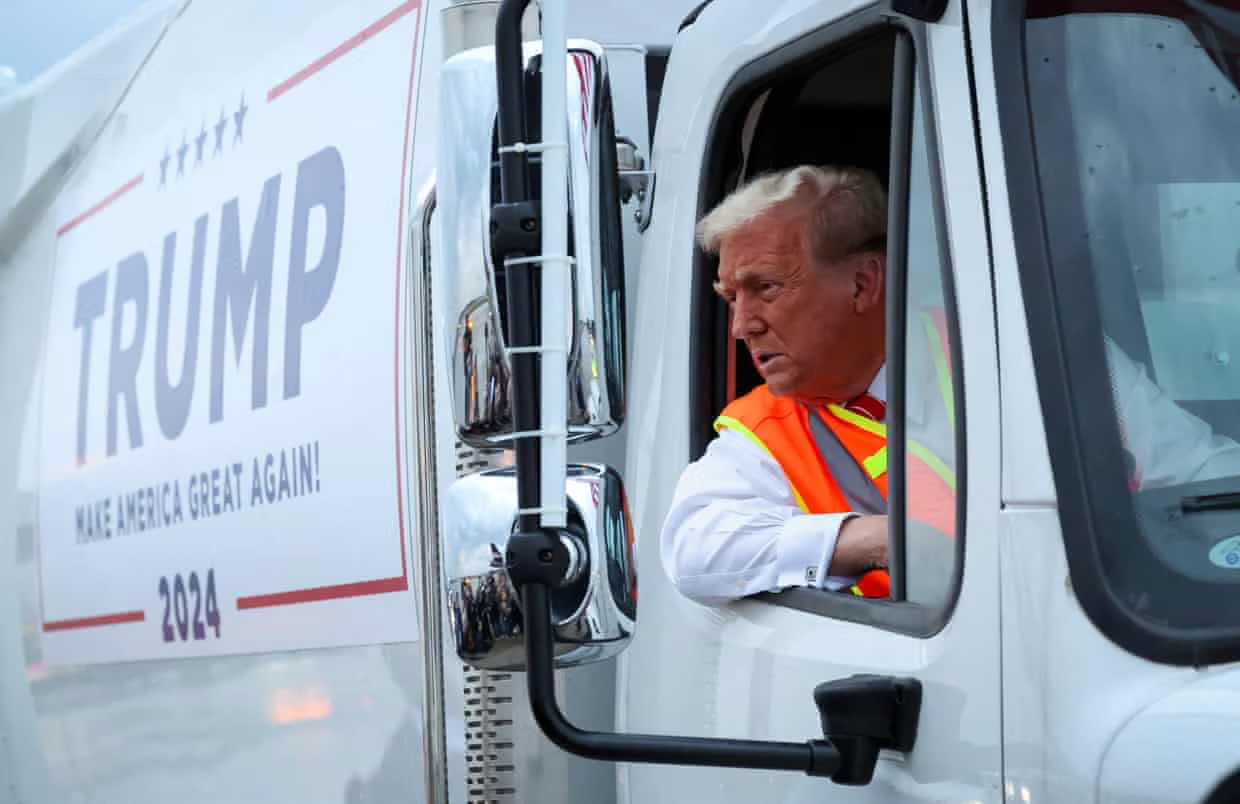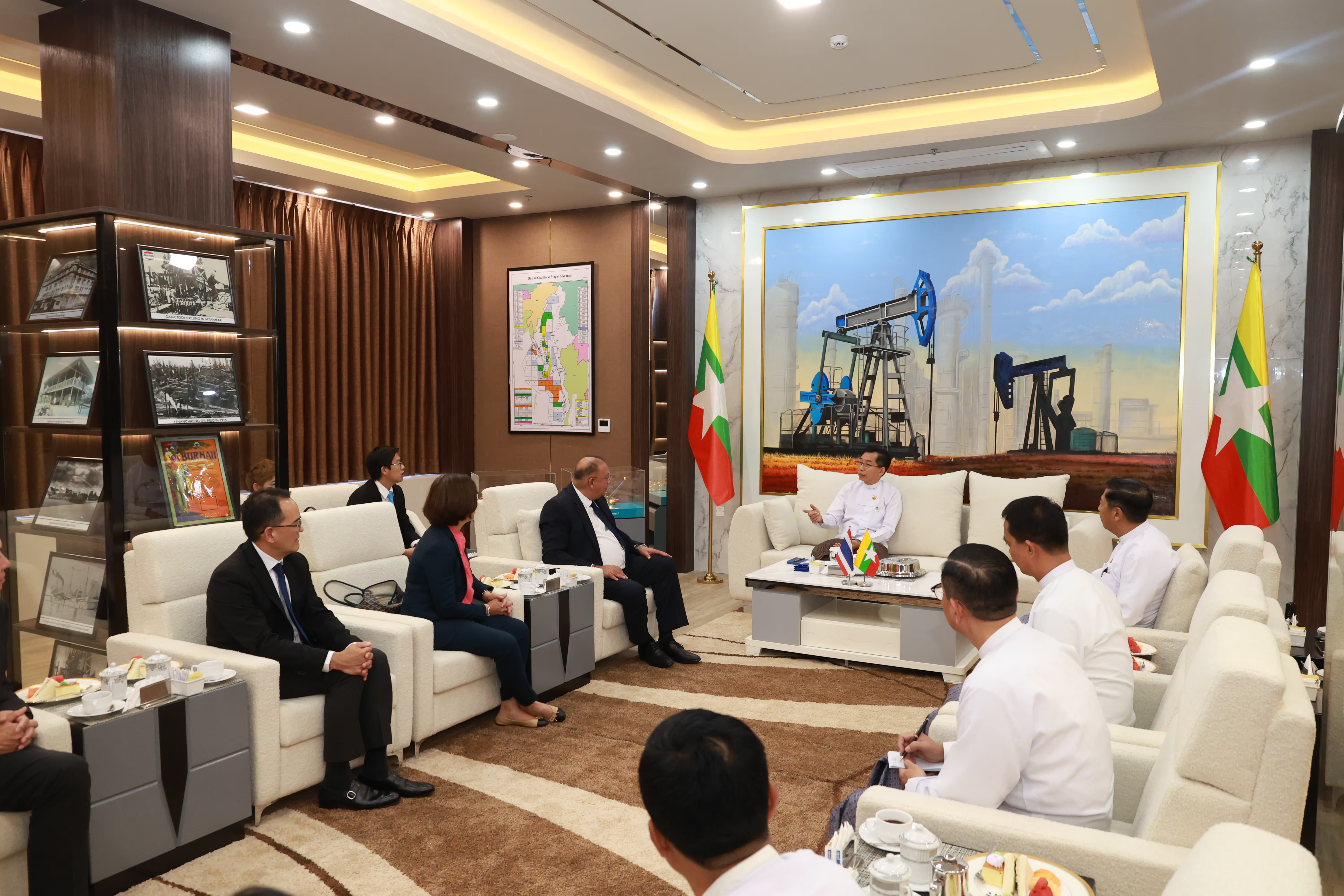
နိုဝင်ဘာ ၁၈၊ ၂၀၂၅ -
ဘဏ္ဍာရေးဆိုင်ရာ သတင်းမီဒီယာကြီးများ၏ မကြာသေးမီက ထုတ်ပြန်ချက်များအရ Apple ကုမ္ပဏီ သည် ခေါင်းဆောင်မှုပိုင်း အပြောင်းအလဲအတွက် တက်ကြွစွာ ပြင်ဆင်နေကြောင်း သိရသည်။ Apple ဘက်မှ တရားဝင် အတည်ပြုထားခြင်း မရှိသေးသော်လည်း ၂၀၂၅ ခုနှစ် နိုဝင်ဘာလလယ်ပိုင်းက ကျယ်ကျယ်ပြန့်ပြန့် ထွက်ပေါ်လာသော သတင်းများအရ Tim Cook သည် မကြာမီ ကာလအတွင်း CEO ရာထူးမှ နုတ်ထွက်ဖွယ်ရှိကြောင်း ဖော်ပြနေကြသည်။
နောက်ဆုံးရ သတင်းများအပေါ် အခြေခံထားသည့် သတင်းအချက်အလက် အကျဉ်းချုပ်မှာ အောက်ပါ အတိုင်း ဖြစ်သည်-
၁။ အဓိကသတင်း “ဘာတွေ ဖြစ်ပျက်နေသလဲ” - Tim Cook ကို CEO ရာထူးမှ နုတ်ထွက်စေရန် Apple ကုမ္ပဏီက "ပြင်ဆင်မှုများ အရှိန်မြှင့်လုပ်ဆောင်နေပြီ" ဟု သတင်းများက ဖော်ပြကြသည်။
အချိန်ကာလသတ်မှတ်ချက် - ဤအပြောင်းအလဲသည် ၂၀၂၆ ခုနှစ်တွင် အမြန်ဆုံး စတင်ဖြစ်ပေါ်လာနိုင် သည်။
အတည်ပြုမှု အခြေအနေ - ဤအချက်သည် လောလောဆယ်တွင် (အဓိကအားဖြင့် Financial Times မှ) အတွင်းသတင်းများအပေါ် အခြေခံထားခြင်း ဖြစ်သည်။ Apple ကုမ္ပဏီဘက်မှ တရားဝင် ထုတ်ပြန်ချက် တစ်စုံတစ်ရာ မရှိသေးသကဲ့သို့ အပြီးသတ် ဆုံးဖြတ်ချက်ကိုလည်း လူသိရှင်ကြား ကြေညာခြင်း မရှိသေး ပါ။
၂။ ဘာကြောင့်လဲ အသက်အရွယ်ကြောင့်လား - Tim Cook သည် ၂၀၂၅ ခုနှစ်၊ နိုဝင်ဘာလတွင် အသက် ၆၅ နှစ် ပြည့်ပြီဖြစ်ရာ ပုံမှန် အငြိမ်းစားယူသည့် အရွယ်သို့ ရောက်ရှိနေပြီ ဖြစ်သည်။
စီစဉ်ထားသော အရိုက်အရာဆက်ခံမှု - ဤလှုပ်ရှားမှုသည် Apple ၏ စီးပွားရေး စွမ်းဆောင်ရည် (လက်ရှိတွင် ခိုင်မာအားကောင်းနေဆဲဖြစ်သည်) နှင့် သက်ဆိုင်ခြင်း မရှိဘဲ တည်ငြိမ်မှုကို သေချာစေရန် အတွက် ကာလရှည်ကြာ ဂရုတစိုက် စီစဉ်ထားသော ဆက်ခံသူ လွှဲပြောင်းရေး အစီအစဉ်၏ တစ်စိတ် တစ်ပိုင်းသာ ဖြစ်ကြောင်း သတင်းရင်းမြစ်များက အလေးပေး ပြောကြားထားသည်။
.၃။ ဆက်ခံဖွယ်ရှိသည့် ထိပ်တန်း လျာထားသူ - Apple ၏ ဟာ့ဒ်ဝဲ အင်ဂျင်နီယာဆိုင်ရာ အကြီးတန်း ဒုတိယဥက္ကဋ္ဌ ဖြစ်သူ John Ternus သည် Cook ၏ နေရာကို ဆက်ခံရန် ထိပ်ဆုံးမှ ပြေးနေသူဟု အများက ရှုမြင်ထားကြသည်။
ဘာကြောင့် သူ့ကို ရွေးချယ်သလဲ - Ternus (အသက် ၅၀ နှစ်) သည် iPhone၊ iPad နှင့် Mac တို့၏ ဖွံ့ဖြိုး တိုးတက်မှုကို ကြီးကြပ်ခဲ့သော အတွေ့အကြုံရင့် အမှုဆောင် တစ်ဦးဖြစ်သည်။ သူသည် ကုမ္ပဏီတွင်းနှင့် ဒါရိုက်တာအဖွဲ့၏ လေးစားမှုကို ရရှိထားသူလည်း ဖြစ်သည်။
၄။ ဆက်လက် မျှော်လင့်ရမည့်အရာများ- ကြေညာမည့် အချိန်ကာလ - ၂၀၂၆ ခုနှစ်၊ ဇန်နဝါရီလကုန်တွင် ပြုလုပ်မည့် Apple ၏ ဝင်ငွေရှင်းတမ်း အစီရင်ခံစာ မတိုင်မီ တရားဝင် ကြေညာချက် ထွက်လာ လိမ့်မည်ဟု လေ့လာဆန်းစစ်သူများက မျှော်လင့်မထားကြပါ။
ကြားကာလ အပြောင်းအလဲ - အကယ်၍ လာမည့်နှစ် အစောပိုင်းတွင် ကြေညာချက် ထွက်ပေါ်လာပါက ဇွန်လတွင် ကျင်းပမည့် ကမ္ဘာလုံးဆိုင်ရာ ဆော့ဖ်ဝဲရေးသားသူများ ကွန်ဖရင့် (WWDC) သို့မဟုတ် စက်တင်ဘာလတွင် ပြုလုပ်မည့် iPhone မိတ်ဆက်ပွဲကဲ့သို့သော ပွဲကြီးများ မတိုင်မီ CEO အသစ် အနေဖြင့် လုပ်ငန်းခွင်နှင့် အသားကျစေရန် အချိန်ကိုက် လုပ်ဆောင်ဖွယ်ရှိသည်။
အခြားအသေးစိတ် အချက်အလက်များ - Tim Cook အနေဖြင့် CEO ရာထူးမှ နုတ်ထွက်လိုက်လျှင်ပင် အသွင်ကူးပြောင်းရေးကာလကို လမ်းညွှန်ရန်အတွက် အမှုဆောင် ဥက္ကဋ္ဌ (Executive Chairman) အဖြစ် ကုမ္ပဏီတွင် ဆက်လက် ရှိနေနိုင်သည်ဟု ခန့်မှန်း ပြောဆိုမှုများလည်း ရှိနေသည်။
အဓိကမှတ်သားရန်အချက်- Tim Cook သည် လက်ရှိအချိန်တွင် Apple ၏ CEO အဖြစ် ဆက်လက် ရှိနေ ဆဲဖြစ်သည်။ သို့သော် ယုံကြည်စိတ်ချရသော သတင်းများအရ ကုမ္ပဏီသည် သူ၏အငြိမ်းစားယူမှု အတွက် တက်ကြွစွာ ပြင်ဆင်နေပြီး ၂၀၂၆ ခုနှစ်တွင် ရာထူးလွှဲပြောင်းမှု ဖြစ်ပေါ်လာနိုင်ကြောင်းဖော်ပြ နေသည်။
(နိုင်ငံတကာသတင်းများကို အခြေခံစုစည်းပါသည်)

နိုဝင်ဘာ ၁၅၊၂၀၂၅ (Sky News)-
Panorama အစီအစဉ်တွင် သူ၏ မိန့်ခွန်းကို ပြုပြင်တည်းဖြတ်မှုအတွက် BBC ကို အမေရိကန်ဒေါ်လာ ၁ ဘီလီယံမှ ၅ ဘီလီယံကြား တရားစွဲဆိုမည်ဟု ဒေါ်နယ်ထရမ့်က ပြောကြားလိုက်သည်။
အမေရိကန်သမ္မတက စနေနေ့ည၌ Air Force One လေယာဉ်ပေါ်တွင် ရှိနေစဉ် အဆိုပါ အသံလွှင့်ဌာနကို တရားဥပဒေအရ အရေးယူမည်ဖြစ်ကြောင်း အတည်ပြုခဲ့ခြင်းဖြစ်သည်။
"ကျွန်တော်တို့ သူတို့ကို တရားစွဲမယ်။ ဒေါ်လာ တစ်ဘီလီယံ (ပေါင် ၇၉၂ သန်း) နဲ့ ငါးဘီလီယံ (ပေါင် ၃.၇၉ ဘီလီယံ) ကြား လျော်ကြေးရဖို့ သူတို့ကို တရားစွဲမယ်၊ လာမယ့်အပတ်လောက်မှာ ဖြစ်နိုင်တယ်" ဟု သူက သတင်းထောက်များကို ပြောကြားခဲ့သည်။
"ကျွန်တော်တို့ ဒါကို လုပ်ရမယ်၊ သူတို့ လိမ်လည်ခဲ့တယ်ဆိုတာ ဝန်ခံပြီးသားပဲ။ သူတို့ ဒါကို မလုပ်ဘဲ နေခဲ့ကြတာ မဟုတ်ဘူး။ သူတို့ လိမ်လည်ခဲ့တယ်။ ကျွန်တော့်ပါးစပ်က ထွက်တဲ့ စကားလုံးတွေကို သူတို့ ပြောင်းလဲခဲ့တယ်"ဟုထရမ့်ကပြောသည်။
ထို့နောက် ထရမ့်က ယခုသီတင်းပတ်ကုန်တွင် ဝန်ကြီးချုပ် ဆာာ ကီယာစတားမား နှင့် ဤကိစ္စကို ဆွေးနွေးမည်ဖြစ်ကြောင်း သတင်းထောက်များအား ပြောကြားခဲ့ပြီး "ဖြစ်ပျက်ခဲ့သည့်အပေါ် ယူကေ ပြည်သူများ အလွန်ဒေါသထွက်နေကြသည်၊အဘယ်ကြောင့်ဆိုသော် BBC သည် သတင်းတု ဖြစ်ကြောင်း ပြသလိုက်သောကြောင့်ဖြစ်သည်” ဟု အခိုင်အမာ ပြောကြားခဲ့သည်။
၂၀၂၁ ခုနှစ်၊ ဇန်နဝါရီလ ၆ ရက်နေ့တွင် လူအုပ်စုတစ်စုက အမေရိကန် ကက်ပီတိုလ် အဆောက်အအုံ၌ အဓိကရုဏ်းမဖြစ်ပွားမီ ထရမ့်ပြောကြားခဲ့သော မိန့်ခွန်းကို BBC က သတင်းအစီအစဉ်တွင် ပြုပြင် တည်းဖြတ်ခဲ့ခြင်းနှင့် ပတ်သက်၍ စိုးရိမ်မှုများ မြင့်တက်ခဲ့ကြောင်း ဌာနတွင်း မှတ်တမ်းတစ်ခုကို The Daily Telegraph က ယခုလအစောပိုင်းတွင် ဖော်ပြခဲ့သည်။
BBC အကျပ်အတည်း ဘယ်လိုဖြစ်ပွားခဲ့သလဲ
စိုးရိမ်မှုများမှာ ပြီးခဲ့သည့်နှစ် အမေရိကန်ရွေးကောက်ပွဲ မတိုင်မီ တစ်ပတ်အလိုတွင် BBC က ထုတ်လွှင့် ခဲ့သော "Trump: A Second Chance?" မှတ်တမ်းရုပ်သံတွင် သမ္မတ၏ မိန့်ခွန်း အပိုင်းအစများမှ ဗီဒီယို ဖိုင်များကို ဖြတ်ဆက်၍ သူက ကက်ပီတိုလ် အဆောက်အအုံသို့ ထောက်ခံသူများနှင့်အတူ လမ်းလျှောက် သွားပြီး "သတ္တိရှိရှိ တိုက်ပွဲဝင်ရန်" ပြောကြားခဲ့သကဲ့သို့ ထင်ရအောင် ပြုလုပ်ခဲ့ခြင်းနှင့် သက်ဆိုင်နေ သည်။ ပြင်းထန်သော ဝေဖန်မှုများ ထွက်ပေါ်လာပြီးနောက် BBC ညွှန်ကြားရေးမှူးချုပ် တင်မ် ဒေဗီ နှင့် BBC News အမှုဆောင်အရာရှိချုပ် ဒေဘိုရာ တားနက်စ် တို့ နှစ်ဦးစလုံး သူတို့၏ ရာထူးများမှ နုတ်ထွက် ခဲ့ကြသည်။
အသရေဖျက်မှု တောင်းဆိုရန် အခြေအမြစ်မရှိ
ကြာသပတေးနေ့တွင် အဆိုပါ အသံလွှင့်ဌာနက သမ္မတအား တရားဝင် တောင်းပန်ခဲ့ပြီး ယင်းသည် "ဆုံးဖြတ်ချက် အမှားအယွင်း" ဖြစ်ကြောင်းနှင့် အစီအစဉ်ကို "မည်သည့် BBC ပလက်ဖောင်းများတွင်မဆို ဤပုံစံအတိုင်း ထပ်မံထုတ်လွှင့်တော့မည် မဟုတ်ကြောင်း" အာမခံပြောကြားခဲ့သည်။
ပြောရေးဆိုခွင့်ရှိသူတစ်ဦးက "ဗီဒီယိုဖိုင်ကို တည်းဖြတ်ခဲ့သည့်ပုံစံအတွက် BBC က စိတ်ရင်းအမှန်ပင် ဝမ်းနည်းပါသည်" ဟု ပြောကြားခဲ့သော်လည်း "အသရေဖျက်မှု တောင်းဆိုရန် အခြေအမြစ်ရှိသည် ဆိုခြင်းကိုမူ ကျွန်ုပ်တို့ လုံးဝ သဘောမတူပါ" ဟု သူတို့က ထပ်လောင်းပြောကြားခဲ့သည်။
ယခုသီတင်းပတ် အစောပိုင်းတွင် ထရမ့်၏ ရှေ့နေများက BBC အနေဖြင့် တောင်းပန်ခြင်း၊ ဗီဒီယိုဖိုင်ကို ပြန်လည်ရုပ်သိမ်းခြင်း နှင့် လျော်ကြေးပေးခြင်းတို့ မပြုလုပ်ပါက ဒေါ်လာ ၁ ဘီလီယံအတွက် တရား စွဲမည်ဟု ခြိမ်းခြောက်ခဲ့သည်။
သမ္မတ၏ မိန့်ခွန်း အပိုင်းအစများကို ဖြတ်ဆက်၍ သူက ကက်ပီတိုလ် အဆောက်အအုံသို့ ထောက်ခံ သူများနှင့်အတူ လမ်းလျှောက်သွားပြီး "သတ္တိရှိရှိ တိုက်ပွဲဝင်ရန်" ပြောကြားခဲ့သကဲ့သို့ ထင်သွားအောင် ပြီးခဲ့သည့်နှစ် အမေရိကန်ရွေးကောက်ပွဲ မတိုင်မီ တစ်ပတ်အလိုတွင် BBC က ထုတ်လွှင့်ခဲ့သော "Trump: A Second Chance?" မှတ်တမ်းရုပ်သံတွင် ဖန်တီး ပြုလုပ်ခဲ့သည်။
တရားဥပဒေအရ စိန်ခေါ်မှုများ
သို့သော် ဥပဒေပညာရှင်များက မစ္စတာထရမ့်အနေဖြင့် ယူကေ သို့မဟုတ် အမေရိကန် တရားရုံးများ၌ အမှုဖွင့်ရာတွင် စိန်ခေါ်မှုများ ရင်ဆိုင်ရမည်ဟု ပြောကြားထားသည်။
အသရေဖျက်မှု လျော်ကြေးငွေ ပေါင် ၁၀၀,၀၀၀ ($၁၃၂,၀၀၀) ထက် မကျော်လွန်လေ့ရှိသော ယူကေ တရားရုံးများသို့ အမှုတင်သွင်းရန် နောက်ဆုံးသတ်မှတ်ရက်မှာ ကျော်လွန်သွားပြီဖြစ်သည်။ အဘယ် ကြောင့်ဆိုသော် အဆိုပါ မှတ်တမ်းရုပ်သံကို ၂၀၂၄ ခုနှစ် အောက်တိုဘာလတွင် ထုတ်လွှင့်ခဲ့ပြီး ယင်းမှာ တစ်နှစ်ထက် ပိုမိုကြာမြင့်သွားခဲ့သောကြောင့် ဖြစ်သည်။
ထို့အပြင် အဆိုပါ မှတ်တမ်းရုပ်သံကို အမေရိကန်တွင် မပြသခဲ့သောကြောင့်၊ အမေရိကန်ပြည်သူများ မကြည့်ရှု နိုင်ခဲ့သော အစီအစဉ်တစ်ခုကြောင့် သမ္မတအပေါ် အထင်အမြင်သေးသွားသည်ဟု သက်သေပြ ရန် ခက်ခဲလိမ့်မည်လည်းဖြစ်သည်။
The Telegraph တွင် ထပ်မံဖော်ပြခဲ့သည့် ၂၀၂၂ ခုနှစ် ဇွန်လတွင် ထုတ်လွှင့်ခဲ့သော အစီရင်ခံ စာတစ်ခုတွင် BBC ၏Newsnight အစီအစဉ်ကလည်း အဆိုပါ မိန့်ခွန်း၏ ဗီဒီယိုဖိုင်ကိုပင် ရွေးချယ် တည်းဖြတ်ခဲ့သည်ဟူသော စွပ်စွဲချက်အသစ်များကို စုံစမ်းစစ်ဆေးနေကြောင်း BBC က ပြောကြားခဲ့ သည်။
BBC ပြောရေးဆိုခွင့်ရှိသူတစ်ဦးက "BBC ဟာ အမြင့်မားဆုံးသော တည်းဖြတ်မှုစံနှုန်းတွေကို ကိုင်စွဲထားပါတယ်။ ဒီကိစ္စကို ကျွန်တော်တို့ သတိပြုမိပြီးဖြစ်ပြီး အခု စုံစမ်းစစ်ဆေးနေပါတယ်" ဟု ပြောကြားခဲ့သည်။ End

၃၁ အောက်တိုဘာ ၂၀၂၅-
၁။ ထရမ့်တက်ရောက်ခဲ့သည်များနှင့် မတက်လိုက်သည်များ။
◾️APEC ထိပ်သီးအစည်းအဝေးသည် နေ့ရက်ပေါင်းများစွာ ကြာမြင့်ပြီး အစည်းအဝေးအမျိုးမျိုး ပါဝင် သည့် အစီအစဉ်တစ်ခုဖြစ်သည်။
◾️တက်ရောက်ခဲ့သည်များ သမ္မတထရန့်ပ်သည် APEC အစည်းအဝေးအတွက် တောင်ကိုရီးယားနိုင်ငံ၊ ဂျီယွန်ဂျူ (Gyeongju) သို့ သွားရောက်ခဲ့သည်။ သူသည် အောက်တိုဘာ ၂၉ ရက်နေ့တွင် ကျင်းပသော APEC စီအီးအိုများ ထိပ်သီးအစည်းအဝေး သို့ တက်ရောက်ခဲ့ပြီး၊ အလွန်အရေးပါ၍ အားလုံးက မျှော်လင့် နေကြသည့် တရုတ်သမ္မတ ရှီကျင့်ဖျင်နှင့် နှစ်နိုင်ငံအဆင့် တွေ့ဆုံဆွေးနွေးပွဲ ကို ကျင်းပခဲ့သည်။
◾️မတက်ရောက်ခဲ့သည်များ သူသည် အောက်တိုဘာ ၃၁ ရက်နေ့တွင် စတင်သည့် အဓိကအခမ်းအနား ဖြစ်သည့် APEC စီးပွားရေးခေါင်းဆောင်များ ထိပ်သီး အစည်းအဝေးအတွက် ဆက်လက်မနေခဲ့ပါ။ သူ သည် ရှီကျင့်ဖျင်နှင့် တွေ့ဆုံဆွေးနွေးပြီးနောက် အောက်တိုဘာ ၃၀ ရက်နေ့တွင် တောင်ကိုရီးယားမှ ထွက်ခွာခဲ့သည်။
◾️အဖွဲ့ဝင်စီးပွားရေးခေါင်းဆောင် ၂၁ ဦး တရားဝင်တွေ့ဆုံသည့် ဤအဓိက ခေါင်းဆောင်များ ထိပ်သီး အစည်းအဝေးသို့ "မတက်ရောက်ခြင်း" ကို လူအများက "အရေးမလုပ်ဘဲ လစ်လျူရှုခြင်း" သို့မဟုတ် "ကျော်လွှားပစ်ခြင်း" အဖြစ် ကျယ်ကျယ်ပြန့်ပြန့် သတင်းထုတ်ပြန်လျက်ရှိနေသည်။
၂။ အဓိက ထိပ်သီးအစည်းအဝေးကို အဘယ်ကြောင့် ထရမ့်ဘာကြောင့် မတက်သလဲ။
◾️အဆိုပါဆုံးဖြတ်ချက်သည် သူ၏နိုင်ငံခြားရေးမူဝါဒဖြစ်သည့် "အမေရိကန်ပထမ" ချဉ်းကပ်မှုအပေါ် အခြေခံသည်ဟု သတင်းများက ဖော်ပြသည်။
▪️အဓိကရည်မှန်းချက်ပြီးမြောက်- သူ့ခရီးစဉ်၏ အဓိက ရည်ရွယ်ချက်မှာ တိုးမြင့်လာနေသည့် ကုန်သွယ်ရေးစစ်ပွဲကို ဖြေရှင်းရန်အတွက် သမ္မတ ရှီကျင့်ဖျင်နှင့် တိုက်ရိုက်တွေ့ဆုံဆွေးနွေးရန်ဖြစ်သည်။ အခွန်များ၊ မြေရှားဓာတ်သတ္တုများနှင့် ဖန်တန်နိုင်းလ် (fentanyl) ဆိုင်ရာ ကိစ္စများတွင် "ကုန်သွယ်ရေး အပစ်အခတ်ရပ်စဲရေး" ရရှိခဲ့သည့် "အောင်မြင်မှုကြီး" ဟု ထရမ့်က ဖော်ပြခဲ့သောအဆိုပါ တွေ့ဆုံဆွေးနွေးပွဲအပြီးတွင် သူ၏ အဓိကရည်မှန်းချက် ပြီမြောက်ခဲ့ပြီး ထွက်ခွာသွားခဲ့သည်။
▪️နှစ်နိုင်ငံအဆင့် သဘောတူညီချက်များကို ဦးစားပေး- သမ္မတထရမ့်နှင့်ပတ်သက်၍ သူသည် ကြီးမားသော ဘက်ပေါင်းစုံပါဝင်သည့် ဖိုရမ်များထက် တိုက်ရိုက် တစ်ဦးချင်း ဆွေးနွေးမှုများ ကို ပို၍ နှစ်သက်သည့်သူအဖြစ် လူသိများသည်။ ဤကြီးမားသော ထိပ်သီးအစည်းအဝေးများသည် တိုက်ရိုက် သဘောတူညီချက်များထက် ထိရောက်မှု နည်းသည် ဟုသူ၏အစိုးရအဖွဲ့က မကြာခဏ ရှုမြင်လေ့ရှိ သည်။
၃။ ဘယ်လိုအဓိပ္ပာယ် (သက်ရောက်မှုများ)ရှိသလဲ။
သုံးသပ်သူများက ဤလုပ်ရပ်ကို ပုံစံအမျိုးမျိုးဖြင့် အဓိပ္ပာယ်ဖွင့်ဆိုကြသည်။
▪️ ခေါင်းဆောင်မှု ကွက်လပ်ကိုဖန်တီး- အဓိက ထိပ်သီးအစည်းအဝေးကို ကျော်လွှားခြင်းဖြင့် အမေရိကန်သည် အခြားနိုင်ငံများအတွက် "ကြီးမားသော အခွင့်အရေး" ကို ချန်ထားခဲ့သည်။ ထရမ့် မရှိချိန်တွင် သမ္မတ ရှီကျင့်ဖျင်သည် ကျန်ရှိနေခဲ့ပြီး တရုတ်နိုင်ငံကို လွတ်လပ်သော ကုန်သွယ်ရေးနှင့် ဘက်ပေါင်းစုံပါဝင်ရေးကို ကာကွယ်သူ အဖြစ် နေရာယူသည့် မိန့်ခွန်းကို ရှီကပြောကြားခဲ့သည်။
▪️ "အမေရိကန် ပထမ" မူဝါဒကို ပိုမိုခိုင်မာစေ- ဤဆုံးဖြတ်ချက်သည် အမေရိကန်နိုင်ငံသည် APEC ၏ ရည်ရွယ်ထားသည့် ဒီဇိုင်းပုံစံဖြစ်သည့် ကျယ်ပြန့်သော၊ တူညီဆန္ဒအခြေခံ ပူးပေါင်းဆောင်ရွက်မှုထက် အမေရိကန်က ယင်း၏ ကိုယ်ပိုင် အရောင်းအဝယ်ဆန်သော အကျိုးစီးပွားများကို ဦးစားပေးနေကြောင်း အချက်ပြနေသည်။
▪️အမေရိကန်၏ ဂုဏ်သတင်းကို ထိခိုက်စေနိုင်- ဤလုပ်ရပ်ကို အိမ်ရှင်နိုင်ငံ တောင်ကိုရီးယားနှင့် အခြား APEC ခေါင်းဆောင် ၁၉ ဦးအပေါ် "အရေးမလုပ်ဘဲ လစ်လျူရှုခြင်း" အဖြစ် များစွာသောသူတို့က ရှုမြင်ကြသည်။ ကမ္ဘာ့လူဦးရေ၏ ၄၀% နီးပါးနှင့် ကမ္ဘာ့ကုန်သွယ်ရေး၏ တစ်ဝက်ကျော်ကို ကိုယ်စား ပြုသော အာရှ-ပစိဖိတ်ဒေသတွင် ဤအပြုအမူသည် အမေရိကန်၏ ဂုဏ်သတင်းနှင့် သြဇာလွှမ်းမိုးမှုကို ထိခိုက်ပျက်စီးစေနိုင်သည် ဟု သုံးသပ်သူအတော်များများက ဆိုသည်။
Ref: Reuters နှင့်အခြားသတင်းများကို အခြေခံ၍ သုံးသပ်သည်။

အောက်တိုဘာ ၁၉ (ရိုက်တာ) - ဒါကာလေဆိပ်ရှိ သွင်းကုန်သိုလှောင်ရုံစုတွင် ကြီးမားသော မီးလောင်မှု တစ်ခု ဖြစ်ပွားခဲ့ရာ အဓိက အထည်ချုပ်တင်ပို့ရောင်းချသူများ ပိုင်ဆိုင်သော ကုန်ပစ္စည်းများနှင့် ကုန်ကြမ်း ပစ္စည်းများ ကြီးမားစွာပျက်စီးခဲ့ပြီး ဆုံးရှုံးမှုများနှင့် ကုန်သွယ်မှုအပေါ်ထိခိုက်မှုများမှာ ဒေါ်လာ သန်းပေါင်း များစွာအထိရှိနိုင်ကြောင်း အထည်ချုပ်လုပ်ငန်းအကြီးအကဲများက တနင်္ဂနွေနေ့တွင် ပြောကြားခဲ့သည်။
မီးလောင်မှုသည် စနေနေ့ မွန်းလွဲပိုင်းတွင် လေဆိပ်၏ ကုန်ရွာ (cargo village) ရှိ သွင်းကုန်ဌာနတွင် စတင်ဖြစ်ပွားခဲ့ပြီး လေယာဉ်ခရီးစဉ်များကို ယာယီရပ်ဆိုင်းထားခဲ့ရသည်။ တနင်္ဂနွေနေ့တွင် မီးသတ် သမားများနှင့် လေဆိပ်အရာရှိများက ပျက်စီးဆုံးရှုံးမှုများကို စစ်ဆေးနေစဉ်၊ မီးလောင်ကျွမ်းထားသော အဆောက်အအုံ အပျက်အစီးများကြားမှ မီးခိုးများ ဆက်လက်ထွက်နေဆဲဖြစ်သည်။ မီးလောင်မှုကြောင့် သွင်းကုန်ကုန်ကြမ်းများ၊ တင်ပို့ရန်အသင့် အထည်အလိပ်များနှင့် ကုန်ပစ္စည်းနမူနာများ သိုလှောင်ထား သည့် နေရာများ လောင်ကျွမ်းခဲ့ပြီး၊ ၎င်းတို့အားလုံးသည် ဘင်္ဂလားဒေ့ရှ်နိုင်ငံ၏ ဒေါ်လာ ၄၇ ဘီလီယံ တန်ဖိုးရှိ အထည်ချုပ်လုပ်ငန်းအတွက် မရှိမဖြစ် အရာများ ဖြစ်သည်။
"ဒီဖြစ်ရပ်က နိုင်ငံရဲ့ ပို့ကုန် ကုန်သွယ်ရေးကို အကြီးအကျယ် ထိခိုက်စေခဲ့ပါတယ်၊ အထူးသဖြင့် အထည် ချုပ်ကဏ္ဍကိုဖြစ်ပါတယ်" ဟု ဘင်္ဂလားဒေ့ရှ် အထည်ချုပ် ထုတ်လုပ်သူများနှင့် တင်ပို့ရောင်းချသူ များအသင်း (BGMEA) ၏ အကြီးတန်း ဒုတိယဥက္ကဋ္ဌ အီနာမူလ် ဟတ်ခန်က ပြောကြားခဲ့သည်။
"တန်ဖိုးကြီး ကုန်ပစ္စည်းတွေနဲ့ အရေးပေါ် လေကြောင်း တင်ပို့ရမယ့် ပစ္စည်းတွေ ပျက်စီးသွားခဲ့တယ်။ အဲ့ဒီ ထဲမှာ တင်ပို့ဖို့ ပြင်ဆင်ထားတဲ့ အထည်တွေ၊ ထုတ်လုပ်ရေးအတွက် ကုန်ကြမ်းတွေနဲ့ အရေးအကြီးဆုံးကတော့ ကုန်ပစ္စည်း နမူနာတွေ ပါဝင်ပါတယ်"ဟုသူကပြောသည်။
ကုန်ပစ္စည်းနမူနာများ ဆုံးရှုံးခြင်းသည် အနာဂတ် စီးပွားရေးကို ထိခိုက်စေနိုင်ကြောင်း သူက သတိ ပေးခဲ့သည်။ "ဒီနမူနာတွေက ဝယ်လက်အသစ်တွေ ရရှိဖို့နဲ့ အော်ဒါတွေ တိုးချဲ့ရရှိဖို့အတွက် မရှိမဖြစ် လိုအပ်ပါတယ်။ ဒါတွေကို ဆုံးရှုံးလိုက်ရတာဟာ ကျွန်တော်တို့ အသင်းသားတွေ အနာဂတ် အခွင့်အလမ်းကောင်းတွေကို လက်လွှတ်ဆုံးရှုံးရနိုင်တယ်ဆိုတဲ့ သဘောပါပဲ" ဟု သူက ထပ်လောင်း ပြောကြားခဲ့သည်။
လေဆိပ်ကုန်ရွာသည် ဘင်္ဂလားဒေ့ရှ်နိုင်ငံ၏ အလုပ်အများဆုံး ကုန်စည်ပို့ဆောင်ရေး ဗဟိုချက် (logistics hub) တစ်ခုဖြစ်ပြီး၊ နေ့စဉ် ခြောက်သွေ့ကုန် (dry cargo) မက်ထရစ်တန် ၆၀၀ ကျော်ကို ကိုင်တွယ်ဆောင်ရွက်ပေးနေသည်။ ဤပမာဏသည် အလုပ်အများဆုံး ရာသီဖြစ်သော အောက်တိုဘာမှ ဒီဇင်ဘာလအတွင်းတွင် နှစ်ဆအထိ တိုးလာလေ့ရှိသည်။
"နေ့စဉ် စက်ရုံ ၂၀၀ ကနေ ၂၅၀ လောက်က သူတို့ရဲ့ ကုန်ပစ္စည်းတွေကို လေကြောင်းကနေ ပို့ကြတယ်" ဟု ခန် က ပြောသည်။ "ဒီလို ပမာဏနဲ့ ကြည့်ရင် ငွေကြေးဆိုင်ရာ ထိခိုက်မှုက သိသာထင်ရှားပါတယ်"
မီးလောင်မှု၏ အကြောင်းရင်းကိုမူ မသိရှိရသေးဘဲ စုံစမ်းစစ်ဆေးမှုတစ်ခု လုပ်ဆောင်လျက်ရှိသည်။
ဤဖြစ်ရပ်သည် ဘင်္ဂလားဒေ့ရှ်နိုင်ငံတွင် ယခုသီတင်းပတ်အတွင်း သတင်းများတွင်ပါရှိသည့် တတိယမြောက် ကြီးမားသော မီးလောင်မှု ဖြစ်သည်။ အင်္ဂါနေ့က ဒါကာမြို့ရှိ အထည်ချုပ်စက်ရုံတစ်ခုနှင့် ယင်းနှင့်ကပ်လျက် ဓာတုပစ္စည်း သိုလှောင်ရုံတစ်ခုတွင် မီးလောင်မှုကြောင့် လူ အနည်းဆုံး ၁၆ ဦး သေဆုံးပြီး အခြားသူများ ဒဏ်ရာရရှိခဲ့သည်။ ကြာသပတေးနေ့တွင်လည်း ဆစ်တကောင်းမြို့ရှိ ပို့ကုန်ထုတ်လုပ်ရေးဇုန် (export processing zone) တစ်ခုတွင် ခုနစ်ထပ်မြင့် အထည်ချုပ်စက်ရုံ အဆောက်အအုံတစ်လုံး မီးလောင်ကျွမ်းခဲ့သည်။
ဘင်္ဂလားဒေ့ရှ်သည် တရုတ်နိုင်ငံပြီးလျှင် ကမ္ဘာ့ဒုတိယအကြီးဆုံး အဝတ်အထည်တင်ပို့သည့်နိုင်ငံ ဖြစ်သည်။ Walmart၊ H&M နှင့် Gap ကဲ့သို့သော အဓိက ကမ္ဘာလုံးဆိုင်ရာ လက်လီရောင်းချသူများသို့ ကုန်ပစ္စည်းများ တင်သွင်းနေသည့် ဤကဏ္ဍသည် အလုပ်သမား ၄ သန်းခန့်ကို အလုပ်အကိုင် ပေးထားပြီး တစ်နှစ်လျှင် အမေရိကန်ဒေါ်လာ ဘီလီယံ ၄၀ ခန့် ရှာဖွေပေးလျက်ရှိရာ ယင်းသည် နိုင်ငံဂျီဒီပီ (GDP)
၏ ဆယ်ပုံတစ်ပုံကျော်နှင့် ညီမျှသည်။
ပို့ကုန်ရာသီ အထွတ်အထိပ်ကာလအတွင်း ဖြစ်ပွားခဲ့သော ဤမီးလောင်မှုသည် ကုန်ပစ္စည်း တင်ပို့ မှုများကို နှောင့်နှေးစေပြီး နိုင်ငံတကာ ကုန်ပစ္စည်းပေးပို့ရမည့် နောက်ဆုံးသတ်မှတ်ရက်များ အချိန်မီ စေရေးတွင် ထပ်လောင်း စိန်ခေါ်မှုများ ဖြစ်စေနိုင်ဖွယ်ရှိသည်။

NAY PYI TAW, October 11, 2025
Myanmar's Ministry of Energy and Thailand's PTTEP International Limited will collaborate on the new Aung Theing Kha offshore gas project , aiming to begin the first extraction of natural gas in 2028.
Union Minister for Energy U Ko Ko Lwin revealed this information during a meeting with Mr. Montri Rawanchaikul, CEO of PTTEP International Limited, and his delegation on October 10 at the ministry office in Naypyidaw.
According to a press release from the Ministry of Energy, the Union Minister stated that they are working to begin natural gas extraction by 2028. He added that the ministry is coordinating to finalize the necessary agreements as quickly as possible.
The Aung Theing Kha offshore project is a new initiative designed to supply natural gas for domestic electricity production.
Mr. Rawanchaikul also presented plans to drill new wells to increase natural gas production at the declining Yadana and Zawtika offshore projects. In response, the Union Minister urged PTTEP to strive to begin production from the new Zawtika wells in early 2026.
The Union Minister also invited PTTEP to invest in new, promising offshore projects and in the import, storage, and distribution of LNG (liquefied natural gas) from the Kanbauk area in the Tanintharyi Region to both domestic and Thai markets.
#ymg/knl

၁၁ အောက်တိုဘာ ၂၀၂၅
မြန်မာနိုင်ငံ ကမ်းလွန်လုပ်ကွက်အသစ် အောင်သိင်္ခစီမံကိန်းမှ ၂၀၂၈ ခုနှစ်တွင် ပထမဦးဆုံး သဘာဝဓာတ်ငွေ့ စတင်ထုတ်ယူနိုင်ရေးအတွက် စွမ်းအင်ဝန်ကြီးဌာနနှင့် ထိုင်းနိုင်ငံ ထိုင်းနိုင်ငံ၊ PTTEP International Limited တို့ အကျိူးတူပူးပေါင်းဆောင်ရွက်မယ်လို့ သိရပါ တယ်။
စွမ်းအင်ဝန်ကြီးဌာန ပြည်ထောင်စုဝန်ကြီး ဦးကိုကိုလွင်သည် အောက်တိုဘာ ၁၀ ရက်က ထိုင်းနိုင်ငံ PTTEP International Limited ၏ အမှုဆောင်အရာချုပ်ဖြစ်သူ Mr. Montri Rawanchaikul နှင့်အဖွဲ့ကို နေပြည်တော်ရှိ ဝန်ကြီးဌာနတွင်တွေ့ဆုံစဉ် ပြည်ထောင်စုဝန်ကြီးက အဆိုပါကိစ္စ ထုတ်ဖော်ပြောကြားခဲ့ခြင်းဖြစ်တယ်လို့သိရပါတယ်။
၂၀၂၈ ခုနှစ်တွင် ပထမဦးဆုံး သဘာဝဓာတ်ငွေ့ စတင်ထုတ်ယူနိုင်ရေး ကြိုးစားဆောင်ရွက်ဖို့ ပြည်ထောင်စုဝန်ကြီးက ပြောကြားခဲ့ပြီး စာချုပ်များ အမြန်ဆုံးချုပ်ဆိုနိုင်ရေးအတွက် လည်း ဝန်ကြီးဌာနမှ လိုအပ်သည်များကို ပေါင်းစပ်ညှိနှိုင်းဆောင်ရွက်ပေးလျက်ရှိတယ်လို့လည်း ဆက်လက် ပြောကြားတယ်လို့ စွမ်းအင်ဝန်ကြီးဌာနရဲ့ သတင်းထုတ်ပြန်ချက်မှာ ဖော်ပြထားပါတယ်။
အဆိုပါကမ်းလွန် အောင်သိင်္ခစီမံကိန်းသည် ပြည်တွင်း လျှပ်စစ်ထုတ်လုပ်မှုတွင် အသုံးပြုရန် ရည်ရွယ် ဆောင်ရွက်နေသည့် စီမံကိန်းအသစ်ဖြစ်တယ်လို့သိရပါတယ်။
PTTEP အမှုဆောင်အရာရှိချုပ်က အထွက် နှုန်းကျဆင်းနေသော ကမ်းလွန်စီမံကိန်းများဖြစ်သည့် ရတနာနှင့် ဇောတိကစီမံကိန်းများမှ သဘာဝ ဓာတ်ငွေ့တိုးမြှင့်ထုတ်လုပ်နိုင်ရေး တွင်းအသစ်များ တူးဖော်ဆောင်ရွက်သွားမည့်အခြေအနေကို တင်ပြခဲ့ရာ ဇောတိက စီမံကိန်းတွင် တူးဖော်နေသည့် တွင်းအသစ်များမှ သဘာဝဓာတ်ငွေ့များ ၂၀၂၆ ခုနှစ် နှစ်ဆန်း ပိုင်းတွင် စတင်ထုတ်လုပ်နိုင်ရေး ကြိုးပမ်းဆောင်ရွက်ဖို့ ပြည်ထောင်စုဝန်ကြီးက တိုက်တွန်းခဲ့ကြောင်းလည်း သတင်းထုတ်ပြန်ချက် မှာဖော်ပြထားပါတယ်။
ပြည်ထောင်စုဝန်ကြီးက အာမခံ ချက်ကောင်းမွန်သည့် ကမ်းလွန်စီမံကိန်းအသစ်များတွင်လည်း ရင်းနှီးမြှပ်နှံနိုင်ရန် အခွင့်အလမ်းများ ရှိကြောင်းနှင့် တနင်္သာရီတိုင်းဒေသကြီး၊ ကံပေါက်ဒေသမှ တစ်ဆင့် ပြည်တွင်းနှင့် ထိုင်းနိုင်ငံသို့ LNG တင်သွင်းသိုလှောင်ဖြန့်ဖြူးခြင်းလုပ်ငန်းများတွင် လာ ရောက်ရင်းနှီးမြှုပ်နှံရန်လည်း PTTEP ကို ဖိတ်ခေါ်ခဲ့ပါတယ်။
#ymg/knl

By- Thu Htet Thar
Across South Asia—from Nepal to Pakistan, Bangladesh, Sri Lanka, and Indonesia—a new rhythm of political mobilization has emerged. Local grievances are rapidly transforming into mass movements, and scholars are now describing this speed as digital contagion. While these uprisings are rooted in deep-seated economic hardship and widening inequality, it is the fundamental design of algorithms that is turning isolated anger into regional conflagrations.
How Algorithms Ignite the Fire
The crucial question is how these digital networks act as accelerants, transforming sparks of anger into widespread infernos. The process relies on three interlocking dynamics that accelerate mobilization:
Complex Contagion: Traditional protest required slow organization, but algorithms facilitate complex contagion. Individuals often require multiple exposures from different contacts before they decide to act. In South Asia, successive WhatsApp forwards about trials or repeated posts ridiculing corruption chipped away at hesitation until the collective momentum became irresistible.
Algorithmic Amplification: This is where the core engine of unrest lies. Algorithms are designed by platforms to reward posts that generate engagement. Research indicates that anger-laden content is six times more likely to be shared than neutral material. Videos of police brutality or the lavish lifestyles of political elites spread quickly, while neutral reports struggle for visibility. This highly engaging, anger-driven content dominates feeds, and algorithms compress it into short windows, creating an urgent fear of missing out.
Network Bridges: Algorithms enable narratives to cross borders through bridge ties. Diaspora communities (such as Pakistani communities in Europe) or student unions and YouTube influencers act as connectors, ensuring that strategies and narratives leap from one national context to another, producing regional resonance.
Who Controls the Code and Why? (Profit vs. Power)
This regional crisis forces us to confront the question of control and motivation. The algorithms reshaping fragile democracies are designed by platforms headquartered in Silicon Valley and other global tech hubs.
The primary motivation behind their design is clear: these algorithms are built to maximize engagement, not to manage political fallout. This is fundamentally an economic incentive—the corporate drive to keep users on platforms for longer. However, the unintended consequence of this profit-driven design is profound political instability.
While governments have attempted to exercise control (e.g., Nepal severing access to six major platforms or Pakistan using internet shutdowns to suppress dissent), the core tools of mobilization remain coded into corporate algorithms that reward outrage.
Conclusion
It is essential to recognize that algorithms are merely the accelerant; the hidden fuel of these uprisings remains deep-seated economic vulnerability. Algorithms simply amplify this visible disparity and sense of relative deprivation, convincing people that their limited prospects are unfair compared to the privileges of the political elites.
The selfish and irresponsible choices of profit-driven tech firms have turned their platforms into instruments of social instability. By designing algorithms that prioritize engagement above all else, these companies have knowingly built outrage machines that profit from societal discord. The algorithms' reward system, which champions anger-laden and divisive content, is not an unforeseen consequence—it is the direct result of a business model that values user clicks and ad revenue over the well-being of entire nations.
In conclusion, until societies address the dual pressures of economic hardship and the reckless behavior of tech firms, the potential for the next viral uprising is only a click away. This demands new thinking on corporate responsibility and governance in the digital age, holding these companies accountable for the instability they help create.
-End-
Reference : When Algorithms Ignite Uprisings: The Science Behind South Asia’s Viral Movements by thesciencematters.org
Page 1 of 70